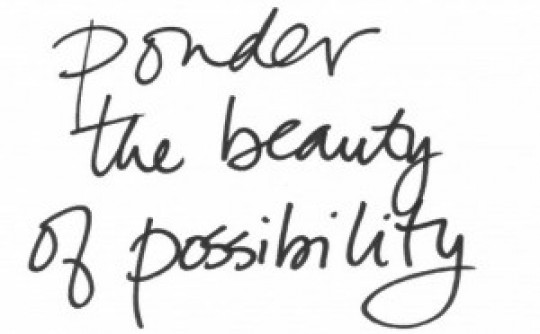From Prototypes to Performance
17 Mar 2013

Part 3: The Royal Exchange Theatre ‘Family Experience Programme’
This is the final part of a series of three blogs looking at the value of Audience Experience Design using a case study at the Royal Exchange Theatre (RXT) in Manchester. If you want to get up to speed, please click for Part 1: Focusing on the Blind Spot and Part 2: The Art of Possibility
For the rest of you, welcome back.
We’ve reached the exciting stage where, armed with a set of prototypes, pared down from a wonderful cornucopia of ideas, the cloth cut to fit the budget, we then tested 3D prototypes with an invited group of families, including dressing up in real theatrical costumes, 'trail testing' around the buidling, sample food and craft activities.
Given the prompt “You’re testing us, we’re not testing you”, and thus empowered, the families threw themselves into the task and delivered funny, insightful and incredibly useful feedback to help us hone the offer. A positive brand touch point in its own right!
Fast forward a few weeks, and with all the family feedback taken on board, it was all up and running: digital marketing to encourage families to come earlier; front line staff more attuned to the needs and wants of a family audience; a broader catering offer at different price points, and a new temporary Food Emporium to mitigate queuing pre-show and during the interval.
The one selected flagship idea taken forward wasThe Rat’s Lair. Here, the ground floor Education Lounge was refashioned into an unexpected dedicated family area. Designed by the team and built by a freelance technician, it was an atmospheric space that truly combined ‘artistry with magic’, as per the Experience Plan. Lavishly decorated - in a tatty, gothic kind of way - to looked like a rat’s den. Inside, there were dressing up activities, stand alone craft activities, comfy sofas, a wall of rat’s cages housing fake rats for the ‘Yeugh factor’ , and a stash of Family Welcome Trails to take people on an adventure around the building. It was less than we had imagined in our flights of informed-fancy, but it delivered.
You can have a peek at the prototyping session and The Rat's Lair here.
Observational research during the run of the show revealed a broad range of positive and creative family interactions in The Rat’s Lair:
- autonomous and collaborative play,
- individual and shared discovery,
- visible surprise, delight, happiness, enjoyment and pleasure,
- dressing up, twirling, posing, smiling, showing off, taking photos,
- imaginative play and role play,
- creative and focused craft activity,
- active kids and relaxed parents,
- comfort and ease,
- plenty of ‘Yeugh’!
In order to fully appreciate the importance of these observable behaviours they need to be contextualised. At a time in the customer journey when most theatres are focus on satisfactory customer care, generating income (food, programmes, merchandise) and getting people in and out of the auditorium safely, this modest project delivered a rich experience akin to those crafted by enlightened museum/gallery curators and educators. It took the theatre customer experience to new heights in a way that was specific, intended and crafted.
A basic on-line audience experience survey revealed predominantly higher ‘satisfaction’ ratings with facilities and services than previous shows. The Rat’s Lair scored higher than in its previous guise as the Education Room and was the highest ranked facility in the building. Audience members gave their experience the highest overall visitor star rating compared to previous shows. Had we the resource to conduct face-to-face research, we may have discovered additional experiential benefits that we had not planned for and thus built on, or ‘pain points’ we hadn’t anticipated that we could have learnt from.
The feedback we did obtain however compellingly demonstrates the largely untapped potential of our theatre buildings to enrich, engage and entertain audiences beyond the stage. At the internal staff de-brief, an exciting range of ideas was mooted that would further lever the RXT Brand Experience as a unique producing house that could connect with audiences and building visitors in previously unimagined ways.
Looking at the Family Experience programme through a different lens, this was a small project that punched above its weight when measured by a number of inclusive innovation criteria:
1. The theatre building is re-imagined as a site for richer audience engagement. The stage and Front of House are both exciting spaces.
2. The creative intervention must have an astute focus on the audience/brand experience.
3. Permission to play must be granted and made explicit.
4. The ‘design playground’ is non-hierarchical. Creative and core staff at all levels have equally valid creative contributions to make.
5. Team-led user prototyping is core, mitigating expensive ‘flops’ and engaging customers.
6. Selections are democratic, informed by specific experiential objectives with specific personas in mind.
7. Success is evaluated against experiential KPIs agreed by the team.
It became clear from staff feedback that this one-off project has dropped a depth-charge into the thinking of the RXT. I am excited to see how they take the learning forward, not just in relation to the audience experience offer, but also in how they work together in the future towards of a shared vision of that offer.
The focus of this project was quite narrow and time specific. Imagine now if it were adopted as a holistic programme of work where you widened your bandwidth to look at all your customer interfaces and stakeholder groups? Imagine if one of your core strategic objectives were to align audience delight with Brand Experience? Imagine if you had a central Audience Experience Plan designed to build brand strength, sharpen competitive advantage, generate revenue and drive audience acquisition, retention and loyalty.
Now wouldn’t that be a hugely rewarding (and strategically important) design playground to play in … anyone want to come play?
The Art of Possibility
13 Mar 2013

Part 2: The Royal Exchange Theatre ‘Family Experience Programme’
This is Part 2 of a series of 3 blogs looking at the value of Audience Experience Design using a case study at the Royal Exchange Theatre (RXT) in Manchester. If you want to get up to speed, please click here for Part 1: Focusing on the Blind Spot.
For the rest of you, welcome back.
I’ve called Part 2 ‘The Art of Possibility’ because one of the biggest challenges I encounter when working with mainstream, building-based arts organisations is individual and group thinking that has become stuck. Whilst there may be plenty of creative, imaginative input into what goes on stage, many other areas of the audience experience offer has improved incrementally at best – and most often remains unconsidered. Moreover, employees (who are custodians of the theatre) satisfy themselves with managing and maintaining the status quo because that is the path of least resistance.
The capacity to re-imagine, experiment and take risk beyond the limits of the stage has been undermined by the many economic, managerial, policy and societal challenges facing the arts today. We need to re-acquaint ourselves with the art of possibility for its own sake, regardless of do-ability. Without imagination and disruptive thinking to keep our offer fresh, appealing and relevant we run the risk of being blindsided by other sectors that do.
So … back to the programme.
Having reached the point of developing a Family Experience Plan, with clear, aspirational objectives, we needed to undergo four specific processes (based on the principles of Design Thinking) to realise the plan:
1: Optimise what we already have.
2: Innovate and create new platforms for value delivery.
3: Prototype, test, refine and deliver.
4: Evaluate and learn.
1. Optimise what we already have
Customer Journey Mapping revealed areas of mediocre performance (satisfaction points), unacceptable performance (pain points) and ‘hugs’ (delight points). All of these needed optimising. Ideas included:
Queue busting: more service points for buying refreshments, a safe place for families to relax whilst one family member became the ‘go-for’ and a walking sweet shop that approached customers rather than expecting them to queue at a static sales point.
Safety and security: a policy where no child is allowed to exit the building unaccompanied, and a dedicated meet up point for lost children.
Welcome: a personal greeting and goodbye at entrances, security guards dressed in friendlier uniforms and character hand puppets for ushers to welcome and interact with children.
Affordability and value-for-money: more varied catering options at different price points together with free activities.
2: Innovate and create new platforms for value delivery
Having optimised the existing offer, we needed to push performance further and think beyond the easy and the obvious. The team needed to cross over into new territory and create additional value, and so I facilitated them through a process of Creative Idea Generation designed to stimulate fresh thinking in answer to the question: In what ways might we deliver on our Family Experience Plan?. This session combined creative thinking games and classic brainstorming with SCAMPER techniques (http://www.mindtools.com/pages/article/newCT_02.htm) in order to unstick the team’s thinking. Over 150 ideas flowed out from this session which were clustered, evaluated and voted on until we landed on the following 7:
Prop Shop: a place where families can creatively experience what really happens in a producing theatre,
Wardrobe: where families can have fun dressing up, creating and playing characters, again referencing 'theatricality',
Scene settings: a series of changeable backdrops where children can role play and act out in costume, more theatricality,
Make a Play: a simple set of dialogue sheets children can mix and match to act out stories, even more theatricality,
Rat’s Lair: a chill out zone where families can relax away from the pre-show Front of House busy-ness,
Family Welcome Trail: a dedicated route where families can discover the building’s unique architecture and history,
Food Emporium: a beautifully designed food service area to help the queue-busting effort and complement the overall brand experience.
These are what I refer to as new service delivery and audience enrichment platforms. These particular ideas provide opportunities for families to experience ‘aliveness’, ‘pleasure’, and ‘creativity’.
The planned interventions also created a unique sense of Brand RXT. Making props, trying on costumes and role playing would connect audiences more fully with the ethos of this creative, artistic, producing theatre. The unique beauty and history of the building would be experienced more fully, directly and intimately via the family trail. Moreover, audiences would also encounter the thrill of discovering which famous faces had ‘trodden the boards’.
Advance marketing would encourage families to arrive earlier, play longer and thus potentially be willing to spend more. The concept of ‘memory making’ was also adopted: creating opportunities for families to take photos of themselves to keep and share with others via social media, thus augmenting awareness of the show and the amplified experience offer.
Then came more ‘fun’ as the team brought their ideas alive. Visual thinking, group dialogue, team challenges, Play Dough modeling and even Snoopy figurines populated a 'design playground' where the team could creatively develop the customer story. Paper prototypes were made and pitched to members of the Creative and Senior Management Team. Winning ideas were selected and a budget was assigned. Given the time and modest budget available for what was to be a pilot project we had to cut the cloth to fit. That was probably one of the biggest challenges of the whole project given the quality and breadth of the team’s aspirations.
What happened next? Part 3 will follow soon with details of Steps 3 and 4 - what was tested, what was delivered - together with an overview of what we achieved and the value of this approach.
Click here if you'd like to see images from the creative and prototyping worshops.